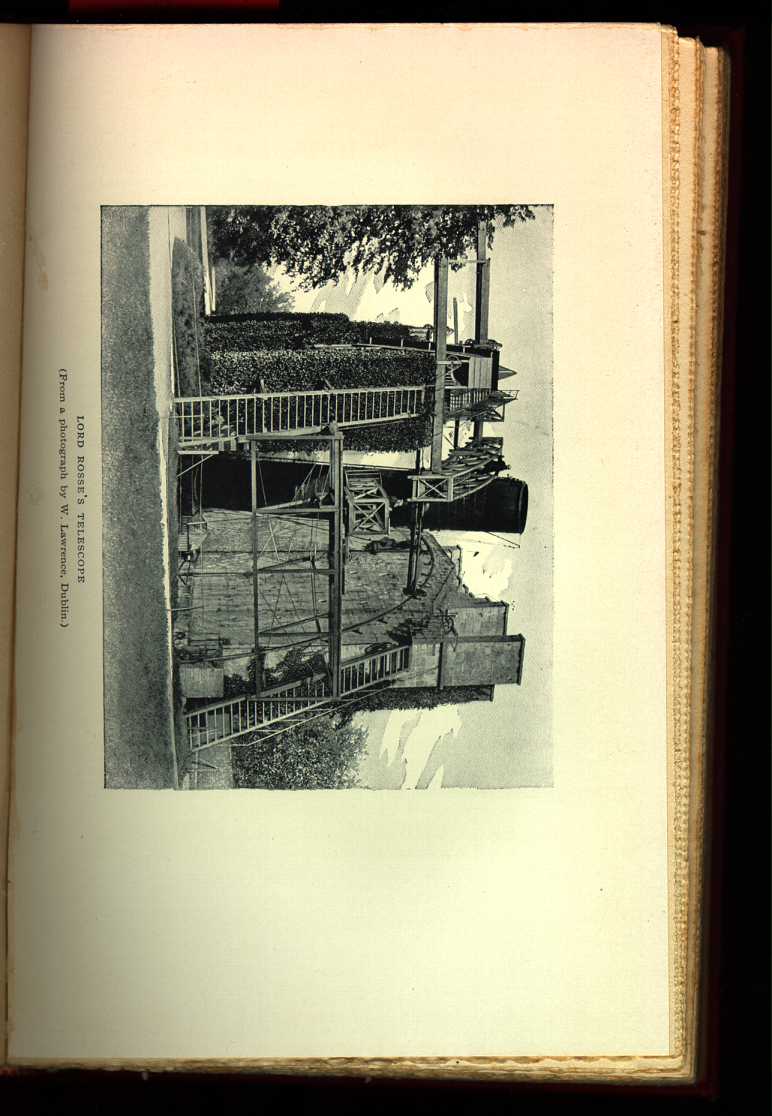| II THE PROGRESS OF MODERN ASTRONOMY A History of Science | ||
The Structure of Nebulæ
Yet the new instruments, while leaving so much untold, have revealed some vastly important secrets of cosmic structure. In particular, they have set at rest the long-standing doubts as to the real structure and position of the mysterious nebulæ—those lazy masses, only two or three of them visible to the unaided eye, which the telescope reveals in almost limitless abundance, scattered everywhere among the stars, but grouped in particular about the poles of the stellar stream or disk which we call the Milky Way.
Herschel's later view, which held that some at least of the nebulæ are composed of a “shining fluid,” in process of condensation to form stars, was generally accepted for almost half a century. But in 1844, when Lord Rosse's great six-foot reflector—the largest telescope ever yet constructed—was turned on the nebulæ, it made this hypothesis seem very doubtful. Just as Galileo's first lens had resolved the Milky Way into stars, just as Herschel had resolved nebulæ that resisted all instruments but his own, so Lord Rosse's even

LORD ROSSE'S TELESCOPE (From a photograph by W. Lawrence, Dublin.)
[Description: Image of LORD ROSSE'S TELESCOPE (From a photograph by W. Lawrence, Dublin.)]But the inference was wrong; for when the spectroscope was first applied to a nebula in 1864, by Dr. Huggins, it clearly showed the spectrum not of discrete stars, but of a great mass of glowing gases, hydrogen among others. More extended studies showed, it is true, that some nebulæ give the continuous spectrum of solids or liquids, but the different types intermingle and grade into one another. Also, the closest affinity is shown between nebulæ and stars. Some nebulæ are found to contain stars, singly or in groups, in their actual midst; certain condensed “planetary” nebulæ are scarcely to be distinguished from stars of the gaseous type; and recently the photographic film has shown the presence of nebulous matter about stars that to telescopic vision differ in no respect from the generality of their fellows in the galaxy. The familiar stars of the Pleiades cluster, for example, appear on the negative immersed in a hazy blur of light. All in all, the accumulated impressions of the photographic film reveal a prodigality of nebulous matter in the stellar system not hitherto even conjectured.
And so, of course, all question of “island universes” vanishes, and the nebulæ are relegated to their true position as component parts of the one stellar system—the one universe—that is open to present human inspection.
The linking of nebulæ with stars, so clearly evidenced by all these modern observations, is, after all, only the scientific corroboration of what the elder Herschel's later theories affirmed. But the nebulæ have other affinities not until recently suspected; for the spectra of some of them are practically identical with the spectra of certain comets. The conclusion seems warranted that comets are in point of fact minor nebulæ that are drawn into our system; or, putting it otherwise, that the telescopic nebulæ are simply gigantic distant comets.
| II THE PROGRESS OF MODERN ASTRONOMY A History of Science | ||